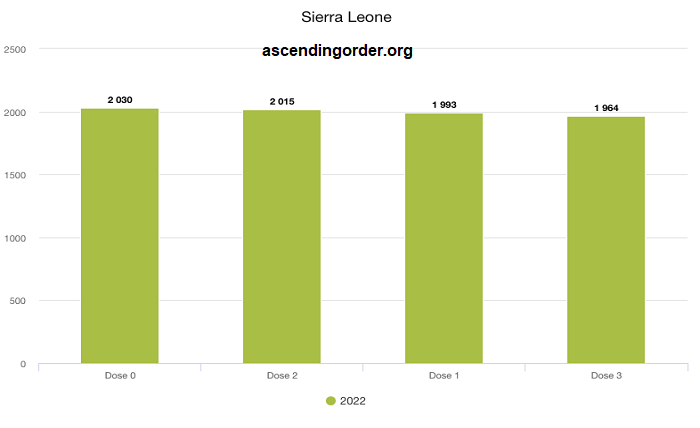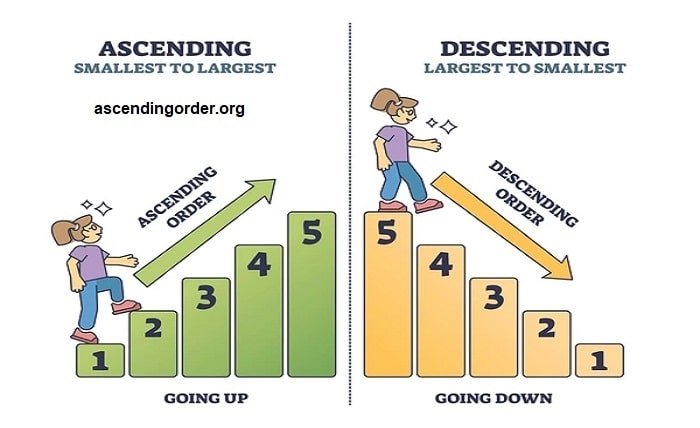About Us
Ascending Order

At Ascending Order, we specialize in bringing clarity and organization to data and information. Our mission is to simplify the sorting process by arranging items from smallest to largest, ensuring efficiency and ease of understanding. Whether you’re managing numbers, lists, or any type of data set, Ascending Order is your trusted partner in achieving structured and organized results. Join us in optimizing your data management and enhancing decision-making processes today.
The Power of Ascending Order: Simplifying Complexity
Ascending order, a fundamental concept across numerous disciplines, helps in organizing and analyzing data efficiently. This blog post explores the importance of ascending order in different contexts, its applications, and how mastering it can simplify complex tasks, improve understanding, and increase efficiency in both professional and personal environments.
Ascending Order
Ascending order is a method of arranging elements where each element is greater than or equal to the one that precedes it. This is most commonly applied to numbers and letters but extends to other sortable data types in various fields.
Importance in Mathematics
In mathematics, arranging numbers or elements in ascending order can clarify problems and solutions, making patterns more noticeable and calculations more manageable. This order is crucial for operations such as statistical analysis and solving algebraic equations.
Ascending Order in Programming
Programming languages use ascending order to manage arrays, lists, and other data structures efficiently. Sorting data helps in optimizing search algorithms and data retrieval processes, making programs run faster and more effectively.

Role in Data Analysis
Data analysts sort information in ascending order to perform trend analysis, predictive modeling, and outlier detection more efficiently. This order helps in visualizing data clearly, often revealing insights that unsorted data might hide.
Application in Daily Life
From organizing files on a computer to sorting emails and even planning daily tasks, ascending order plays a vital role in everyday activities. It helps maintain organization and improving productivity by providing a structured approach to any task.
Ascending Order in Education
Educational systems use ascending order to teach students about sequences and patterns. Understanding how to organize and analyze data from an early age equips students with the skills necessary for academic success and practical life problem-solving.
Benefits in Financial Management
In financial domains, ascending order is used to track transactions, organize accounts, and prepare financial statements. It simplifies complex financial data, making it easier to understand financial health and make informed decisions.
Ascending Order in Digital Marketing
Digital marketers use ascending order to analyze campaign data, sort customer lists, and organize product information. This methodical approach allows for efficient segmentation, targeting, and personalization strategies, enhancing marketing efforts.

Technological Tools Supporting Ascending Order
Various software tools and platforms facilitate the implementation of ascending order, from simple spreadsheet functions like those in Excel to more complex database management systems and programming frameworks.
Challenges with Ascending Order
While beneficial, ascending order can present challenges, such as handling large data sets or dealing with data that doesn’t naturally lend itself to this type of organization. Addressing these challenges often requires additional computational resources or innovative sorting algorithms.
Future Prospects
As data continues to grow in size and complexity, the role of ascending order in managing this data will become even more crucial. Future advancements in AI and machine learning may lead to new methods of sorting and organizing data that build upon the principle of ascending order.
Conclusion
Ascending order is more than just a way to arrange numbers or items; it’s a critical tool for simplification and clarity in a world overwhelmed by data. Whether you are a student, professional, or everyday problem-solver, understanding and utilizing ascending order can dramatically enhance your analytical abilities and organizational skills.

FAQs
What is ascending order? Ascending order is a sequence arrangement where each item is equal to or greater than the one before it, commonly used for numbers or alphabetically for words.
Why is ascending order important? Ascending order is crucial for simplifying data analysis, enhancing problem-solving efficiency, and organizing vast amounts of information logically.
How can I sort data in ascending order using Excel? In Excel, you can sort data by selecting the column you wish to organize, then clicking on the “Sort A to Z” button in the “Data” tab to arrange the data in ascending order.
Can ascending order be applied to all types of data? Ascending order is applicable to any data that can be logically sequenced, including numbers, letters, and certain types of categorical data. However, it may not be applicable for unquantifiable data without clear sorting criteria.
5. What are some common challenges when using ascending order? Common challenges include handling non-uniform data, dealing with very large datasets that require significant computational power to sort, and updating data sequences dynamically as new data is added.
